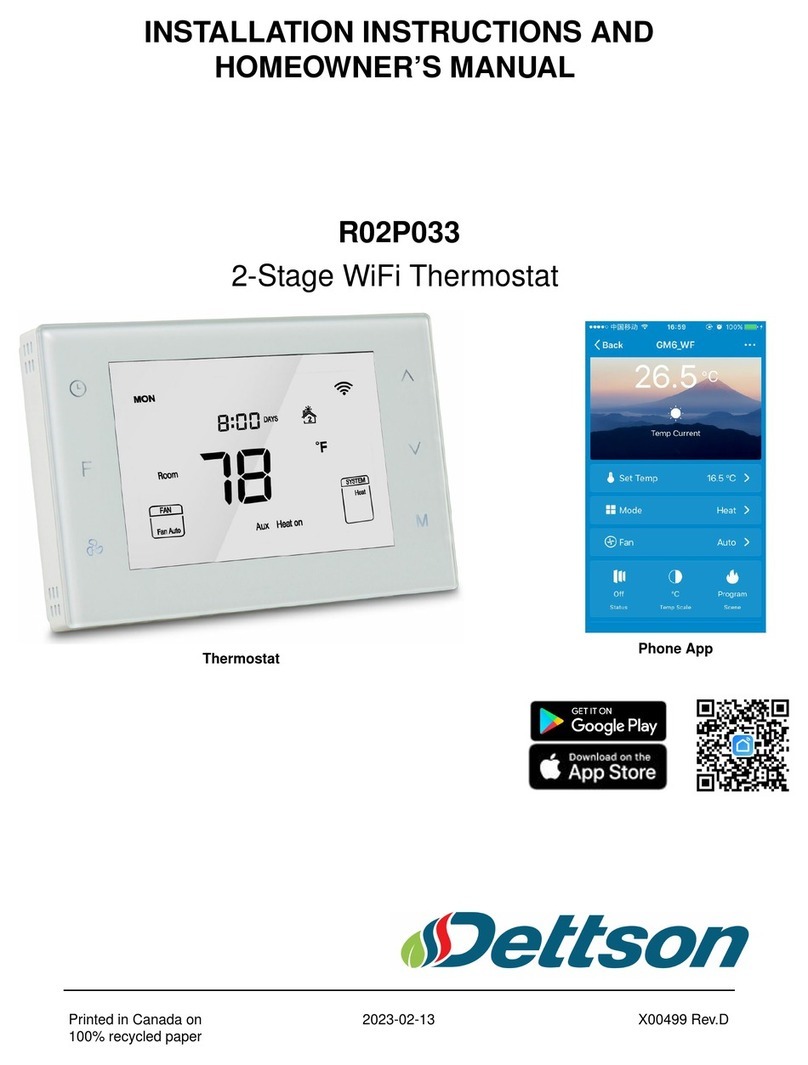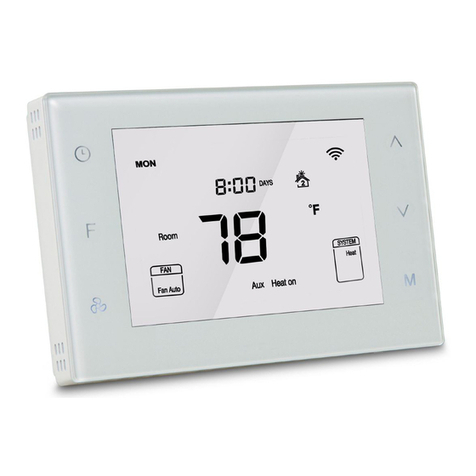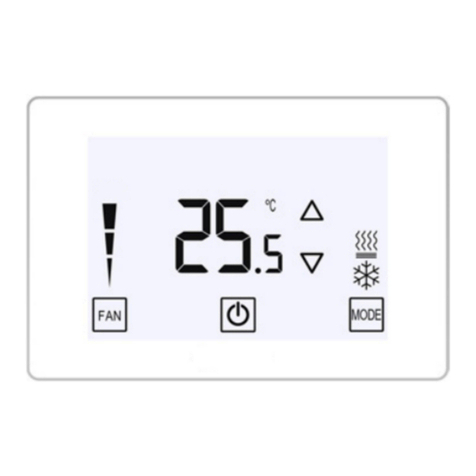
WHITE-RODGERS HOMEOWNER HELPLINE:
1-800-284-2925
Thermostat features:
• Programming for any schedule (including non-programmable)
• Reminders for seasonal maintenance and changing filters
• Energy saving features that improve comfort
• Thin profile with sharp color display
FAILURE TO READ AND FOLLOW ALL INSTRUCTIONS CAREFULLY BEFORE
INSTALLING OR OPERATING THIS CONTROL AND SYSTEM COULD CAUSE PERSONAL
INJURY AND/OR PROPERTY DAMAGE.
INTRODUCTION TO THERMOSTAT AND COMMUNICATING
SYSTEM
This thermostat features a flexible programming sequence for
residential applications. It is designed to control components of a
24 VAC residential ClimateTalkTM communicating system consisting
of gas or electric heat, heat pump, and central air conditioning
applications. The high-resolution color display offers easy readability,
intuitive programming with individual touch buttons to the right of
the screen, on-screen prompting, pop-up message alerts to change
filter, or regular servicing check-ups, and an exchangeable faceplate.
The thermostat has a USB port for contractor setup.
The thermostat’s major features include 40°F to 99°F setpoint range,
1°F resolution, 3.5-inch diagonal 1/4 VGA LCD, auto configure,
autochangeover, selectable continuous fan speeds, humidity control,
dehumidification control, dual fuel control, advanced diagnostics
and fault code display, advanced installer menu, simultaneous heat
and cool program storage, a four-step daily schedule sequence,
energy management recovery, filter change-out indicator, replace
UV lamp indicator, change Humidifier pad and program loss start
up temperature.
Note: If system power is lost for more than eight hours, the clock
will have to be reset. Programming and configuration settings will be
saved.
WARNING
Thermostat installation and all
components of the control system
shall conform to Class II circuits per the
NEC code.
WARNING
To prevent electrical shock and/or
equipment damage, disconnect electric
power to system at main fuse or circuit
breaker box until installation is complete.
ATTENTION:
MERCURY NOTICE
This product does not contain mercury,
but it may replace a product that
contains mercury. Mercury and products
containing mercury must not be discarded
in household trash. Do not touch
any spilled mercury. Wearing non-
absorbent gloves, clean up any spilled
mercury and place it in a sealed
container. For proper disposal of a
product containing mercury or a sealed
container of spilled mercury, place it
in a suitable shipping container. On
the Internet, visit
www.switchthestat.ca
.
com for a location where the product
containing mercury can be sent.
2































